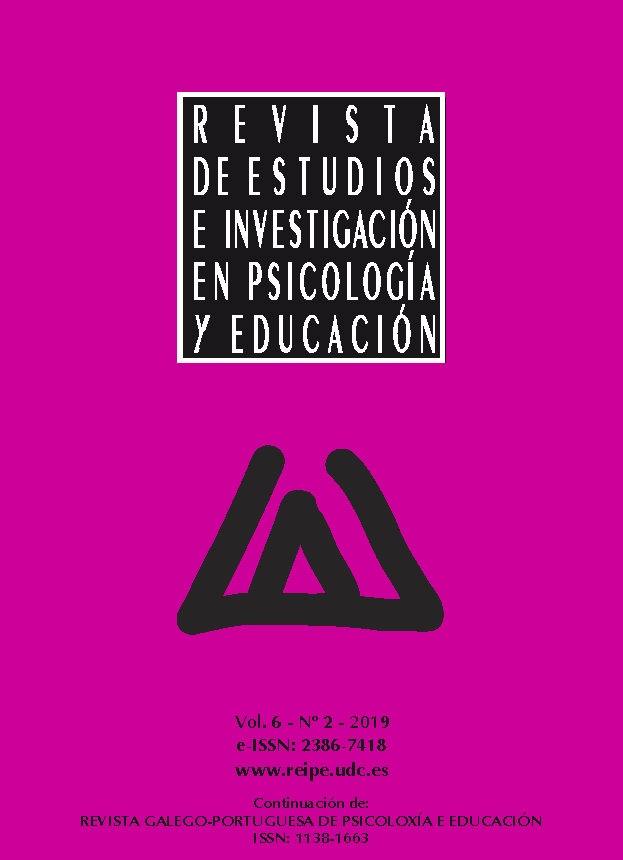Mathematics and science attitude inventory: validation for use in a Spanish-speaking context
Main Article Content
Abstract
Research and evaluation focused on students’ attitudes towards science and mathematics require the availability of culturally appropriate instruments in the language of the studied population. We present the translation and adaptation of the Mathematics and Science Attitude Inventory for its use with Puerto Rican Spanish-speaking secondary school students, within the evaluation of a teacher professional development project. We used a cross-cultural translation and adaptation model that frames these processes in the context of establishing validity and reliability of a measure by assessing the equivalence of the original version and the translated one in various dimensions: semantic, content, technical, criterion, and conceptual. Results obtained provide evidence of the equivalence between the English and Spanish versions of the inventory, as well as the reliability and validity of both versions for our context. The feasibility and utility of the cross-cultural model used were also demonstrated. This model is a valuable guide for the translation and cultural adaption of research and evaluation instruments in diverse languages and cultures.
Keywords:
Downloads
Article Details
References
Aydin, B. (2016). Examination of the relationship between eighth grade students’ learning styles and attitudes towards mathematics. Journal of Education and Training Studies, 4(2), 124-130. https://doi.org/10.11114/jets.v4i2.1162
Behling, O., & Law, K.S. (2000). Translating questionnaires and other research instruments: Problems and solutions. Thousand Oaks, CA: SAGE. https://doi.org/10.4135/9781412986373
Bellido, C., Wayland, K., Bravo Vick, M., Fortis, M. & Arce, J. (2013). Manual de Uso del Protocolo de Observación en la Educación Reformada (PROEDUCAR) [Usage Manual of the Observation Protocol for Reformed Education]. Retrieved from: http://alacima.uprrp.edu/Nuevo-Portal/?page_id=27
Borrero, M., Bravo-Vick, M., Fortis, M. & Padró-Collazo, P. (2016). Mejorando la educación STEM a través de la investigación educativa [Improving STEM education by means of educational research]. Acta Científica 30 (1-3), 6-25.
Bravo, M. (2003). Instrument development: Cultural adaptations for ethnic minority research. In G. Bernal, J. E. Trimble, A. K. Burlew & F. T. L. Leong, Handbook of Racial and Ethnic Minority Psychology. Thousand Oaks, CA: Sage.
Bravo, M., Canino, G. J., Rubio-Stipec, M. & Woodbury-Fariña, M. (1991). A cross-cultural adaptation of a psychiatric epidemiologic instrument: The diagnostic interview schedule’s adaptation in Puerto Rico. Culture, Medicine and Psychiatry, 15(1), 1-18. https://doi.org/10.1007/BF00050825
Brislin, R. W., Lonner, W., & Thorndike, R. M. (1973). Cross-cultural research methods. New York: John Wiley. https://doi.org/10.1177/136346157501200101
Chow, A., Eccles, J.S., & Salmela-Aro, K. (2012). Task value profiles across subjects and aspirations to physical and IT-related sciences in the United States and Finland. Developmental Psychology 48(6), 1612-1628. https://doi.org/10.1037/a0030194
Cohen, J. (1988). Statistical power analysis for the behavioral sciences (2nd ed.). New York, NY: Psychology Press. https://doi.org/10.1016/C2013-0-10517-X
Conner, R. F. (2004). Developing and implementing culturally competent evaluation: A discussion of multicultural validity in two HIV prevention programs for Latinos. In M. Thompson-Robinson, R. Hopson, & S. Sen-Gupta (Eds.), In search of cultural competence in evaluation: Toward principles and practices. New Directions in Evaluation, 102, 51-65. San Francisco, CA: Jossey-Bass. https://doi.org/10.1002/ev.115
Creswell, J. W. (2012). Educational Research. Boston, MA: Pearson.
Engberg, M. E., & Wolniak, G. C. (2013). College students’ pathways to STEM disciplines. Teachers College Record, 115(1), 1-27. https://www.tcrecord.org/content.asp?contentid=16740
English Club (2014). Test of Written Comprehension [Measurement instrument]. Retrieved from http://www.englishclub.com/esl-exams/levels-test-wc-start.htm
Flaherty, J. A. (1987). Appropriate and inappropriate research methodologies for Hispanic mental health. In M. Gaviria (Ed.), Health and behavior: Research agenda for Hispanics (pp. 177-186). Chicago: University of Illinois Press.
Hambleton, R. K. (2005). Issues, designs and technical guidelines for adapting tests into multiple languages and cultures. In R. K. Hambleton, P. F. Merenda, C. D. Spielberger (Eds.), Adapting Educational and Psychological Tests for Cross-Cultural Assessment (pp. 3-38). New Jersey: Lawrence Erlbaum Associates, Inc., Publishers. https://doi.org/10.4324/9781410611758
Henson, R. K. (2001, January 26). Teacher self-efficacy: Substantive implications and measurement dilemmas. Paper presented at the Annual Meeting of the Educational Research Exchange. College Station, TX: Texas A&M University. Retrieved from https://files.eric.ed.gov/fulltext/ED452208.pdf
Koballa Jr., R., & Glynn, S. M. (2008). Attitudinal and motivational constructs in science learning. In S. K. Abell, & N. G. Leaderman (Eds.), Handbook of research in science education (pp. 75-102). New York: Routledge Taylor & Francis Group. https://doi.org/10.4324/9780203824696
Linn, R. L., & Gronlund, N. E. (1995). Measurement and assessment in teaching (7th ed.). New Jersey: Prentice-Hall, Inc.
Minner, D., Ericson, E., Wu, S., & Martinez, A. (2012). Compendium of STEM student Instruments PART II: Measuring students’ content knowledge, reasoning skills, and psychological attributes. Washington, DC: Abt Associates. Retrieved from http://cadrek12.org/resources/compendium-research-instruments-stem-education-part-ii-measuring-students-content-knowledg
Niss, M. A. (2007). Reflections on the state and trends in research on mathematics teaching and learning: From here to utopia. In F. K. Lester (Ed.), Second Handbook of Research on Mathematics Teaching and Learning (Vol. 2, pp. 1293-1312). Charlotte, North Carolina: Information Age Publishing, Inc.
Osborne, J., Simon, S., & Collins, S. (2003). Attitudes towards science: A review of the literature and its implications. International Journal of Science Education, 25, 1049-1079. https://doi.org/10.1080/0950069032000032199
Paciorek, E. (1997). Mathematics and Science Attitude Inventory [Measurement instrument]. Rochester Institute of Technology "Project EDGE." Retrieved from http://oerl.sri.com/instruments/up/studsurv/instr129.html
Reid, N. (2006). Thoughts on attitude measurement. Research in Science & Technological Education, 24(1), 3-27. https://doi.org/10.1080/02635140500485332
Thompson-Robinson, M., Hopson, R., & Sen-Gupta, S. (2004). In search of cultural competence in evaluation: Toward principles and practices. New Directions in Evaluation, 102. San Francisco, CA: Jossey-Bass.
Tytler, R. (2014). Attitudes, identity, and aspirations towards science. In N. G. Lederman, & S. K. Abell (Eds.), Handbook of Research on Science Education (Vol II, pp. 82-103). New York, NY: Routledge. https://doi.org/10.4324/9780203097267
Zhao, D. & Singh, M. (2011). Why do Chinese-Australian students outperform their Australian peers in mathematics: A comparative case study. International Journal of Science and Mathematics Education 9, 69-87. https://doi.org/10.1007/s10763-010-9214-7



